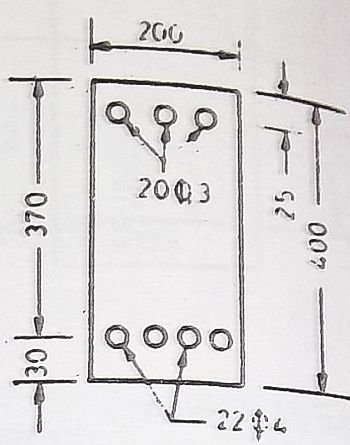7 step design procedure for Doubly reinforced sections
In our article series for “Design of Doubly reinforced sections”, we covered the following:
What are doubly reinforced sections?
Methods for determining Neutral Axis?
Solved numerical examples for determining Neutral Axis
Numerical examples for practice (Find Neutral axis)
Methods for calculating Moment of Resistance
Numerical example for calculating Moment of resistance
Types of problems in Doubly reinforced sections
6 step prodecure for determining stresses in steel and concrete
Numerical example | Stresses in steel and concrete
7 step procedure for designing doubly reinforced sections
We shall now proceed with a numerical example “Design of Doubly reinforced sections” using the 7-step procedure we discussed in the previous article.
Numerical problem:
A doubly reinforced concrete beam 250mm wide and 600mm deep overall has to resist an external bending moment of 95kN-m. Find the amount of tensile and compressive steel required, if cover to the centre of steel on both sides is 50mm. σcbc = 5 N/mm2, σst = 140 N/mm2, m = 18.66
Given that:
Breadth of the beam = b = 250mm
Effective depth of the beam = d = 600 – 50 = 550mm
Distance of compressive steel from the top edge of the beam to the centre of the steel = d’ = 50mm
Permissible stress in concrete = σcbc = 5 N/mm2
Permissible stress in steel = σst = 140 N/mm2
Modular ratio = m = 18.66
Bending moment = M = 95 kN-m
Step one:
To find xc
σcbc/ (σst/m) = xc/(d – xc)
5/(140/18.66) = xc/(550 – xc)
xc = 219.95 = 220mm


